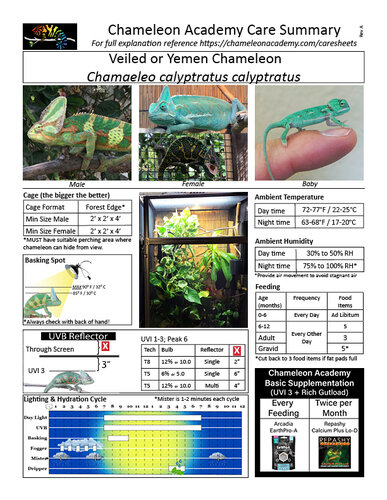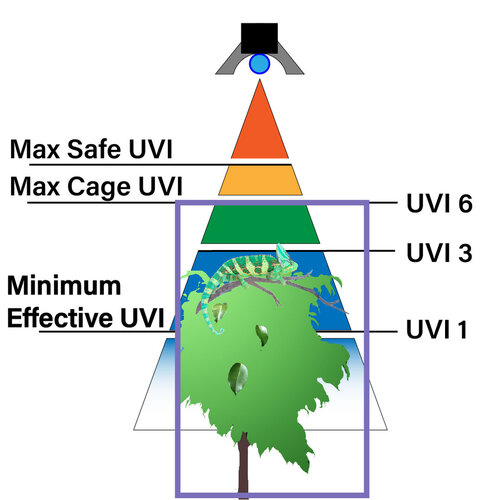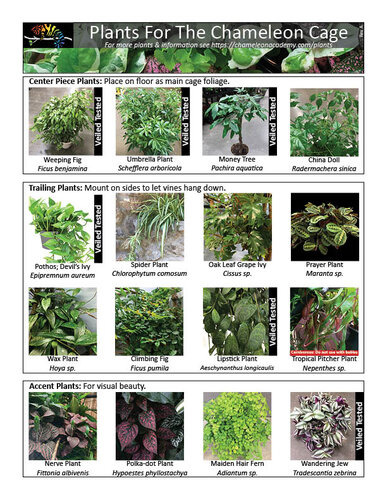Dear Chameleon Forum Members,
I’d like to share a project I have been working on intensely for the last year. This is the Chameleon Academy which is a multi-media class structure that starts a chameleon lover from the basics and leads them through each step until they have created their first cage.
The underlying purpose for this new website was for me to have a place to pour all of the incredible insight and knowledge I was gathering through doing the Chameleon Breeder Podcast. The podcast is a wonderful and unique tool to present information and it has allowed me to present chameleon expertise and experience from, literally, around the world. Unfortunately, Google is in the very primitive stages of audio search (they are working on it!) so, with over 130 episodes it has become difficult to know what information is where. So I realized I needed to create an additional way to access the information. There is a selfish component to this as well. It was kind of embarrassing when someone would ask where they could find information on UVB and even I couldn’t remember where it all was!
But it soon became obvious that I couldn’t just put the episode information down and make it useful without first establishing a firm foundation of basics. And so, this year was spent creating this foundation. To be clear, I have just scratched the surface of the main purpose of this project so there will be aggressive updates and much more multi-media added. But I am a firm believer in saying what I have done, not what I will do so I present this website as an educational tool for a firm foundation in chameleon husbandry.
Here are some links to take a quick tour of the highlights:
Home Page: Land here and go where you wish!
Start of Term 1: Getting Started With Chameleons This is the start of the classes! If you just follow the progression you will be led through the heart of the website.
Caresheets were designed to be more explanatory. But they also have a back end. There was always a limit to what you could put on. Caresheet without making it a book. So how do you summarize without diluting the message? My solution to this was creating a caresheet that showed the basics of actually implementing the information and having a link to the website where it went into nauseating detail. That allowed people to quickly grab a snack, but then return for a substantial meal. The image below goes to the Veiled Chameleon profile, but clicking on the care sheets link will show where Panther and Jackson's are available as well.
UVB Tutorial. There are few topics as frustrating as UVB. It has actually become weaponized to where if you don’t use a certain technology you have substandard husbandry. This is, unfortunately, a result of not understanding what is important. The important part of UVB is the UVB levels that the chameleon has access to. The technology is only the tool to provide that. T8s can provide it, T5s can provide too much, and (gasp) CFLs can be highly effective. They are all merely tools and each needs to be used properly. So I put special effort into explaining how to use the UV Index.

Plants. Good plant guides are hard to find. Mostly because they are mainly taken off of other cat/dog/bird toxicity lists! Even the tortoise lists don’t dive deeply into the ornamentals we tend to use. So I have compiled a list of commonly available plants that I personally have used or other experienced chameleon people have used. It is hardly an exhaustive list, but it will continue to grow. Once again, there is a summary sheet and a deeper data section on the website. One interesting part of this is that I am gathering a section of plants that veiled chameleons have eaten and have had no adverse reactions. We all know about pothos and ficus benjamina…but you’ll find philodendron and croton there too. It seems that Veileds don’t have much respect for our toxicity lists! Now, this does not mean that we have to recommend plants that are toxic to other animals. But we should be less eager to panic a beginning keeper showing of their first cage set-up with one of these “toxic” plants. There is nothing wrong with sharing why we are hesitant to use those plants (for all we know it is a dose issue), but we should also be aware of how much we “know” and how much we “think”.

Behavior and Medical references. In these sections I wanted to provide a visual guide so the keeper could figure out what is going on with their chameleon. It is not meant to be a vet replacement at all, and most of the explanations say to go to your vet! But it provides enough that the keeper can know if this is a condition to be concerned about. Here is the Behavior link and the Medical Link
So, I invite you to take a look. And then come back here and let’s discuss what you find. This is hardly meant to be the end all of husbandry. It is where I am right now after all the research and interaction I have had. And this is, in no way, the only way to make things work! My goal was to present one way to make things work and to explain why to the best of what we know now. And, to be clear, this does not replace anyone else’s care sheets, supplementation recommendation, or anything else. If it has produced a healthy chameleon then it is a valid method. And it is important that we study all methods that work so we can truly understand the common threads!
Please bring that discussion here and let’s talk about it publicly so we can all chime in and grow from the discussion!

I’d like to share a project I have been working on intensely for the last year. This is the Chameleon Academy which is a multi-media class structure that starts a chameleon lover from the basics and leads them through each step until they have created their first cage.
The underlying purpose for this new website was for me to have a place to pour all of the incredible insight and knowledge I was gathering through doing the Chameleon Breeder Podcast. The podcast is a wonderful and unique tool to present information and it has allowed me to present chameleon expertise and experience from, literally, around the world. Unfortunately, Google is in the very primitive stages of audio search (they are working on it!) so, with over 130 episodes it has become difficult to know what information is where. So I realized I needed to create an additional way to access the information. There is a selfish component to this as well. It was kind of embarrassing when someone would ask where they could find information on UVB and even I couldn’t remember where it all was!
But it soon became obvious that I couldn’t just put the episode information down and make it useful without first establishing a firm foundation of basics. And so, this year was spent creating this foundation. To be clear, I have just scratched the surface of the main purpose of this project so there will be aggressive updates and much more multi-media added. But I am a firm believer in saying what I have done, not what I will do so I present this website as an educational tool for a firm foundation in chameleon husbandry.
Here are some links to take a quick tour of the highlights:
Home Page: Land here and go where you wish!
Start of Term 1: Getting Started With Chameleons This is the start of the classes! If you just follow the progression you will be led through the heart of the website.
Caresheets were designed to be more explanatory. But they also have a back end. There was always a limit to what you could put on. Caresheet without making it a book. So how do you summarize without diluting the message? My solution to this was creating a caresheet that showed the basics of actually implementing the information and having a link to the website where it went into nauseating detail. That allowed people to quickly grab a snack, but then return for a substantial meal. The image below goes to the Veiled Chameleon profile, but clicking on the care sheets link will show where Panther and Jackson's are available as well.

UVB Tutorial. There are few topics as frustrating as UVB. It has actually become weaponized to where if you don’t use a certain technology you have substandard husbandry. This is, unfortunately, a result of not understanding what is important. The important part of UVB is the UVB levels that the chameleon has access to. The technology is only the tool to provide that. T8s can provide it, T5s can provide too much, and (gasp) CFLs can be highly effective. They are all merely tools and each needs to be used properly. So I put special effort into explaining how to use the UV Index.

Plants. Good plant guides are hard to find. Mostly because they are mainly taken off of other cat/dog/bird toxicity lists! Even the tortoise lists don’t dive deeply into the ornamentals we tend to use. So I have compiled a list of commonly available plants that I personally have used or other experienced chameleon people have used. It is hardly an exhaustive list, but it will continue to grow. Once again, there is a summary sheet and a deeper data section on the website. One interesting part of this is that I am gathering a section of plants that veiled chameleons have eaten and have had no adverse reactions. We all know about pothos and ficus benjamina…but you’ll find philodendron and croton there too. It seems that Veileds don’t have much respect for our toxicity lists! Now, this does not mean that we have to recommend plants that are toxic to other animals. But we should be less eager to panic a beginning keeper showing of their first cage set-up with one of these “toxic” plants. There is nothing wrong with sharing why we are hesitant to use those plants (for all we know it is a dose issue), but we should also be aware of how much we “know” and how much we “think”.

Behavior and Medical references. In these sections I wanted to provide a visual guide so the keeper could figure out what is going on with their chameleon. It is not meant to be a vet replacement at all, and most of the explanations say to go to your vet! But it provides enough that the keeper can know if this is a condition to be concerned about. Here is the Behavior link and the Medical Link
So, I invite you to take a look. And then come back here and let’s discuss what you find. This is hardly meant to be the end all of husbandry. It is where I am right now after all the research and interaction I have had. And this is, in no way, the only way to make things work! My goal was to present one way to make things work and to explain why to the best of what we know now. And, to be clear, this does not replace anyone else’s care sheets, supplementation recommendation, or anything else. If it has produced a healthy chameleon then it is a valid method. And it is important that we study all methods that work so we can truly understand the common threads!
Please bring that discussion here and let’s talk about it publicly so we can all chime in and grow from the discussion!





